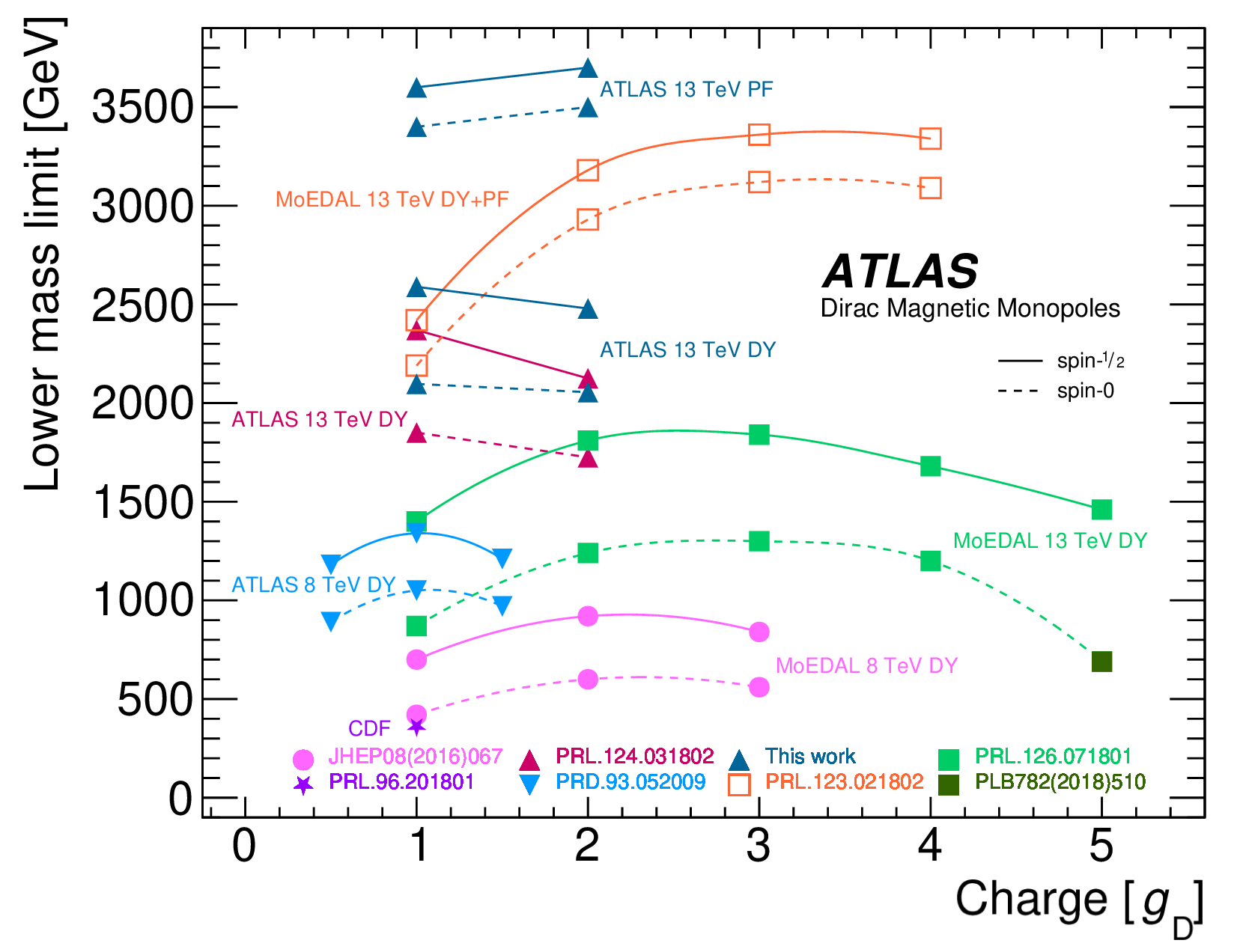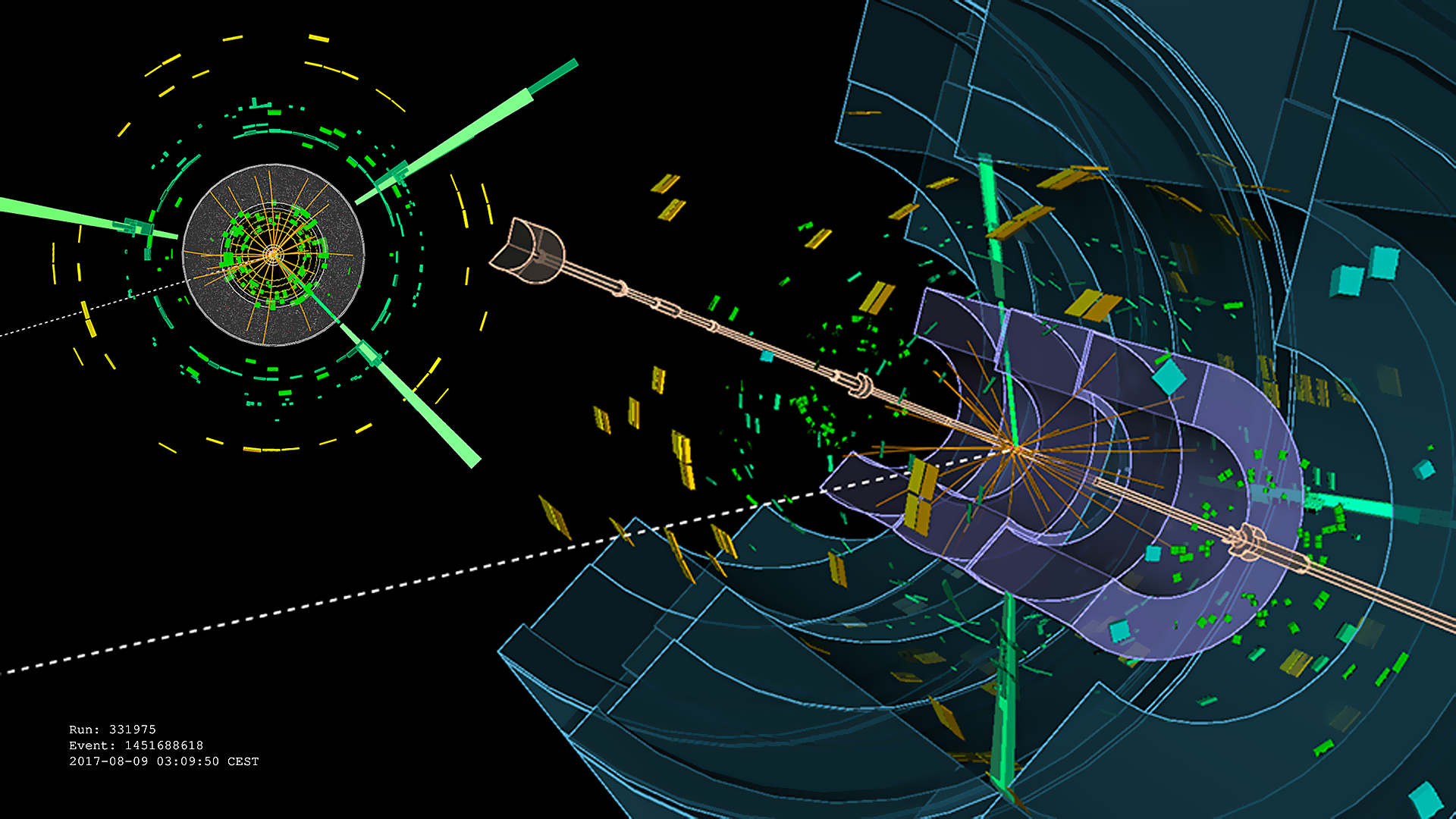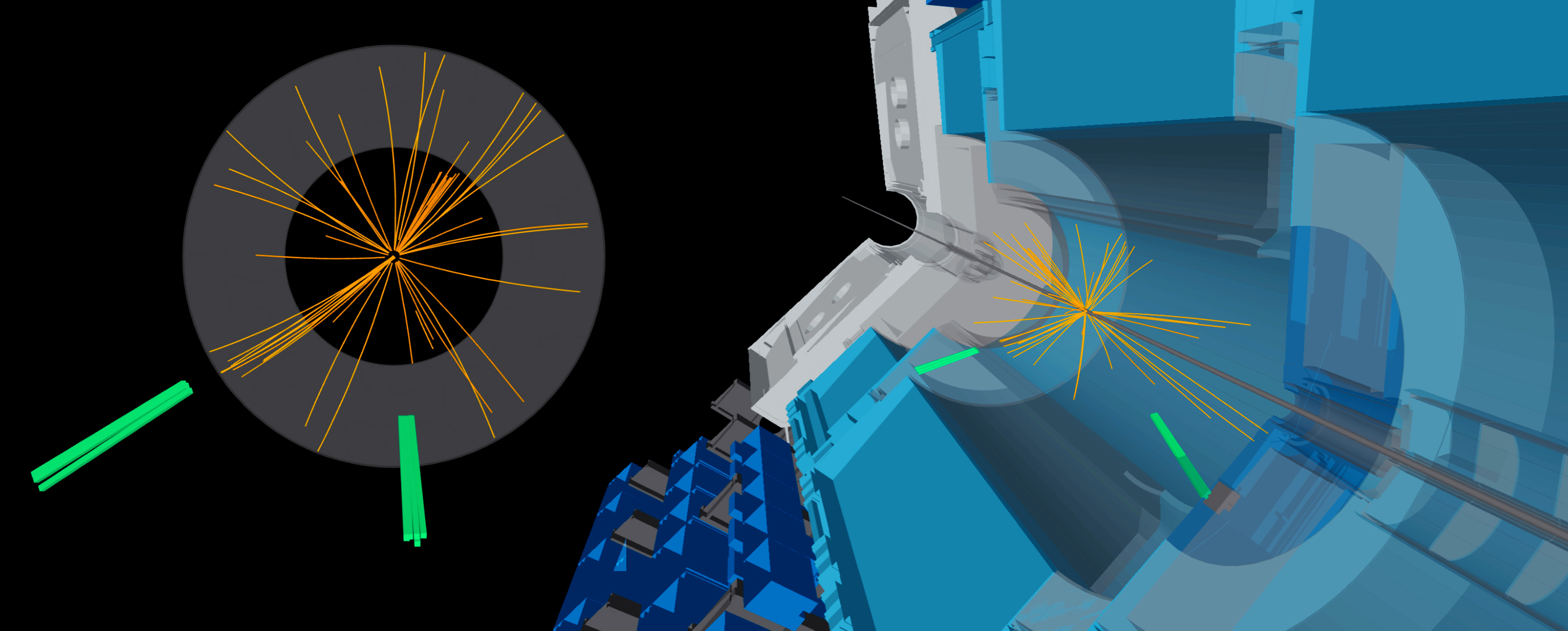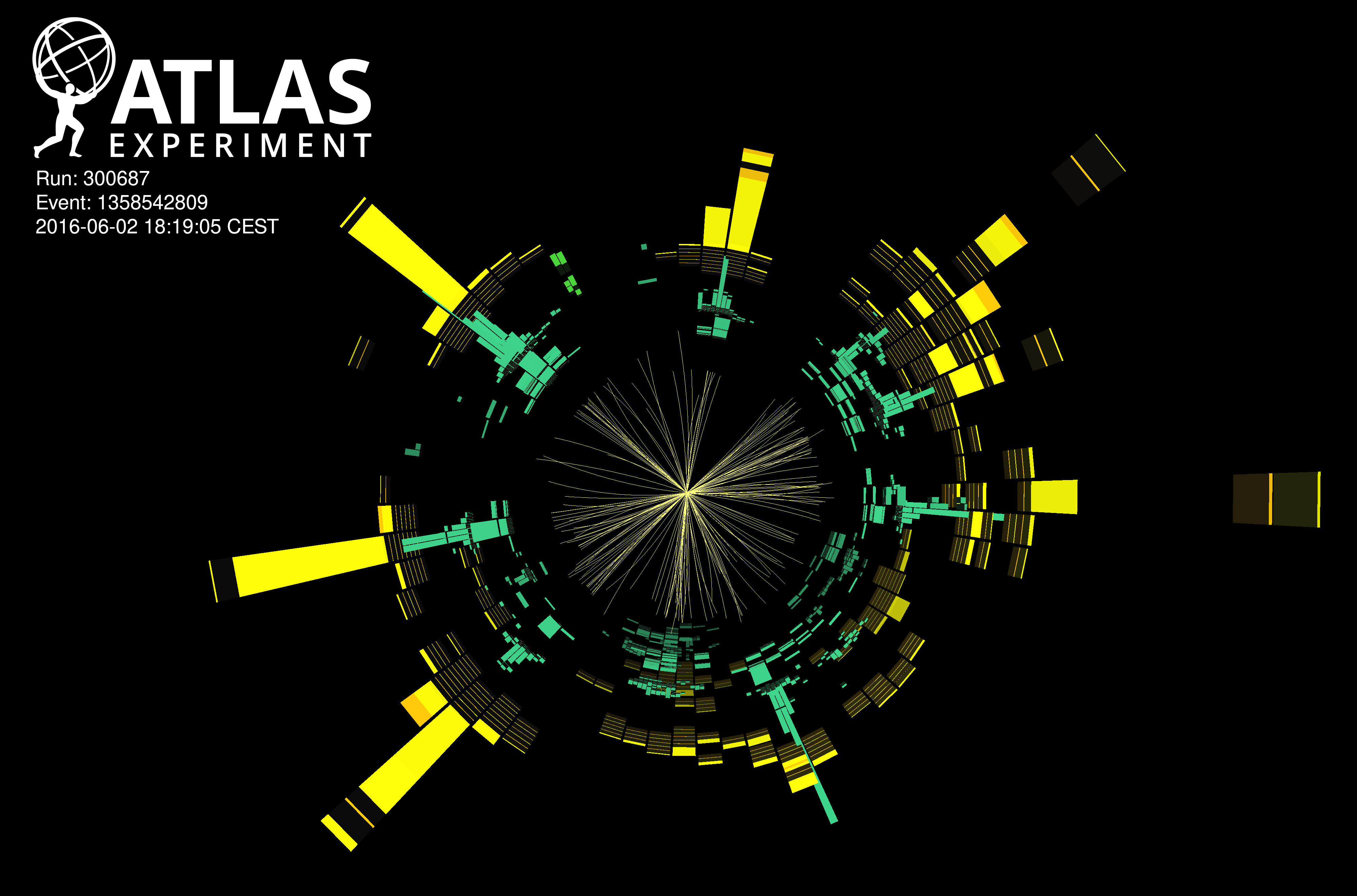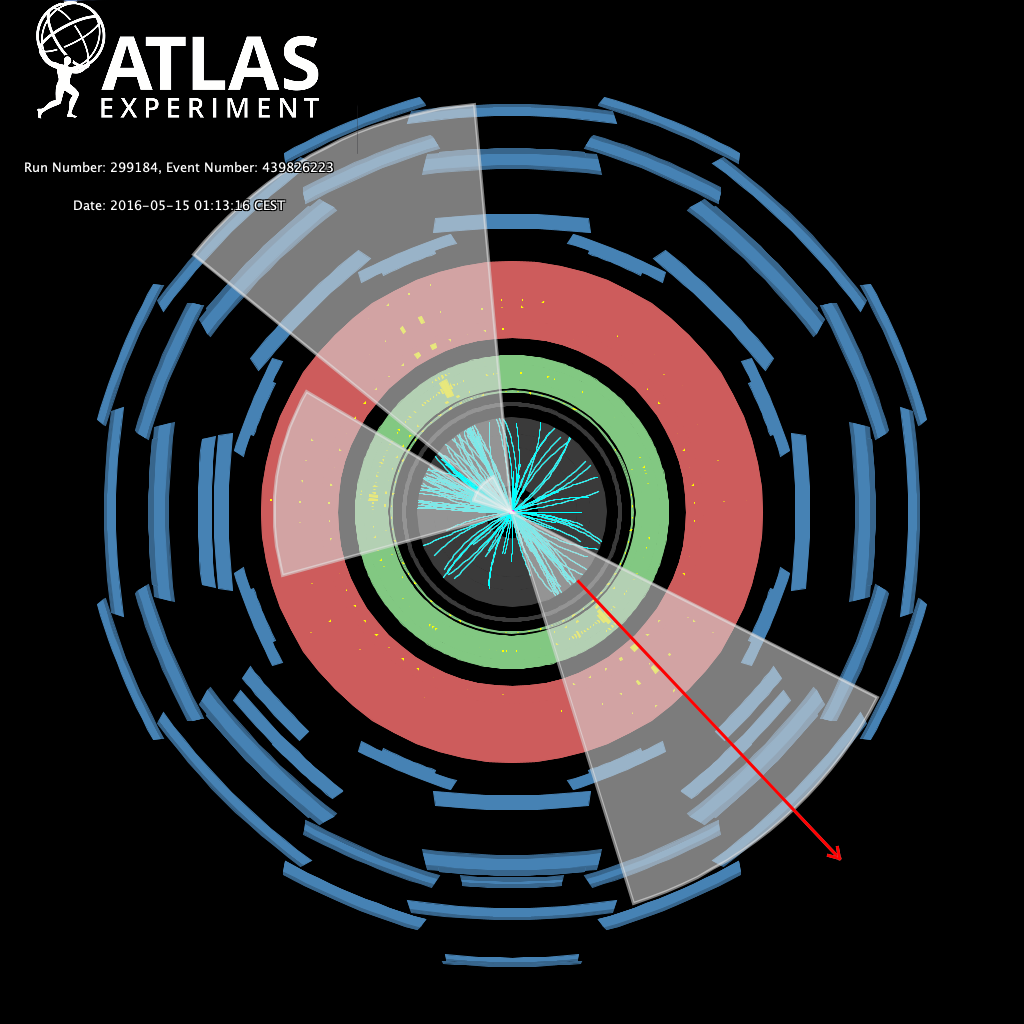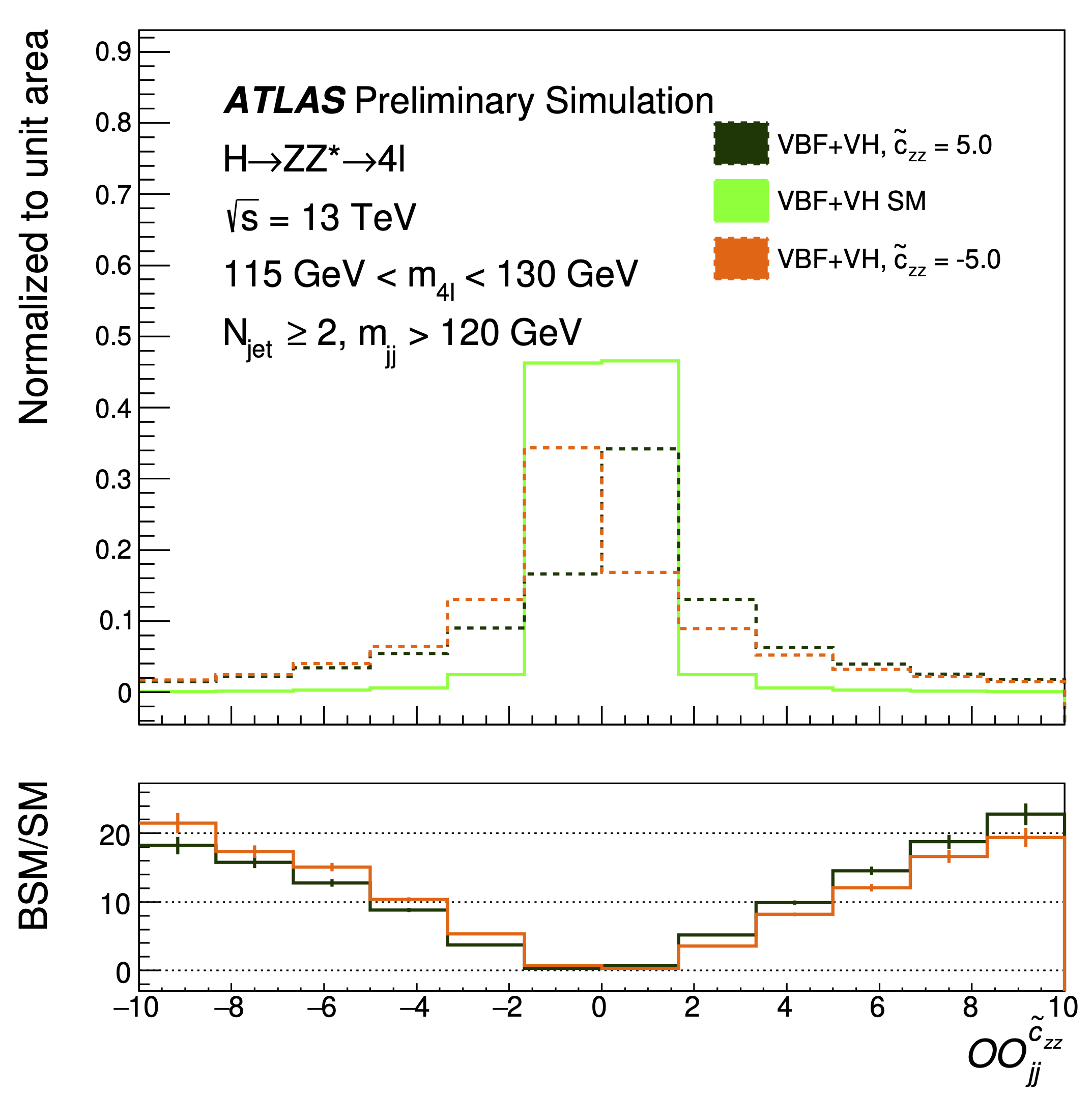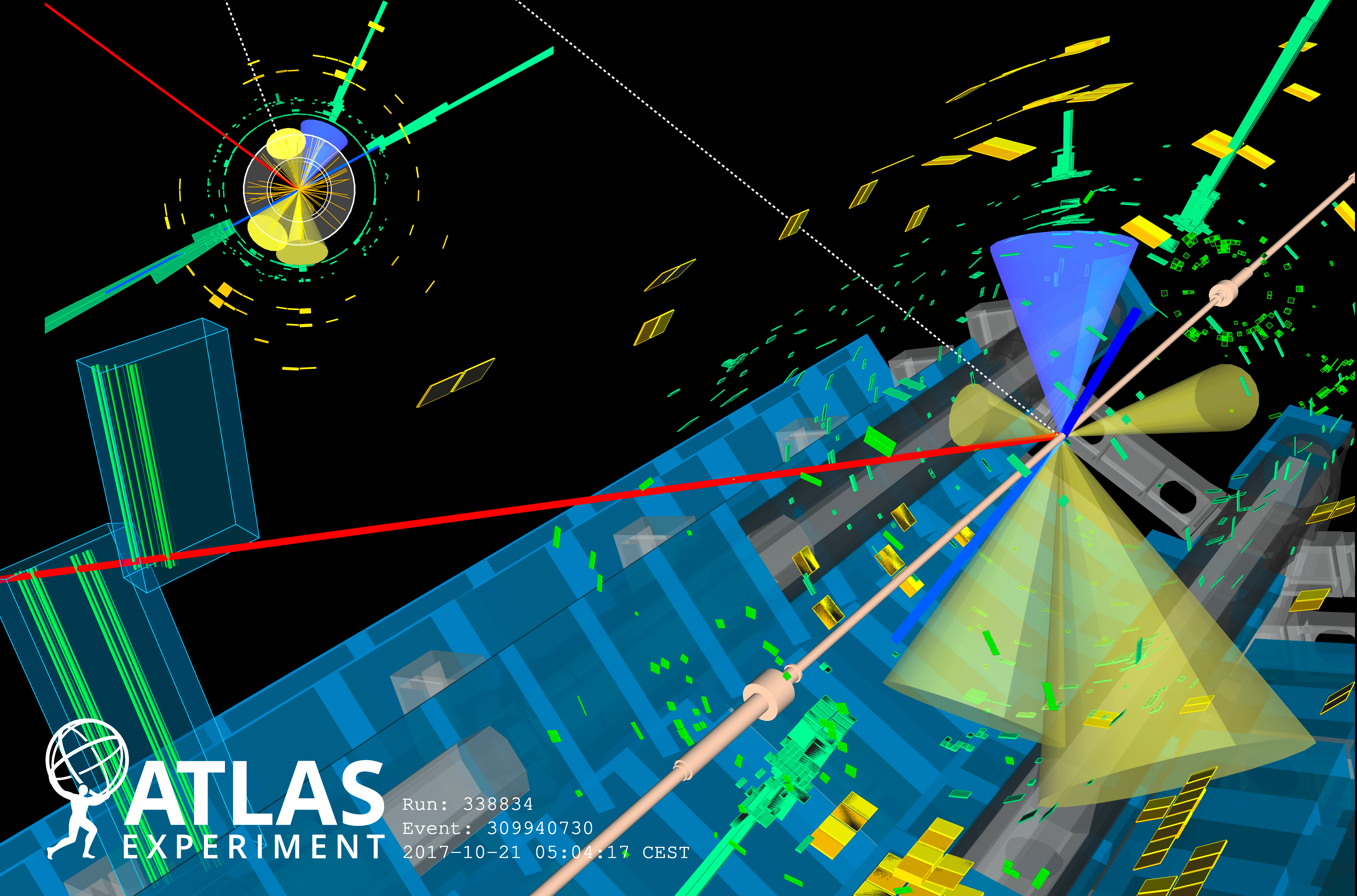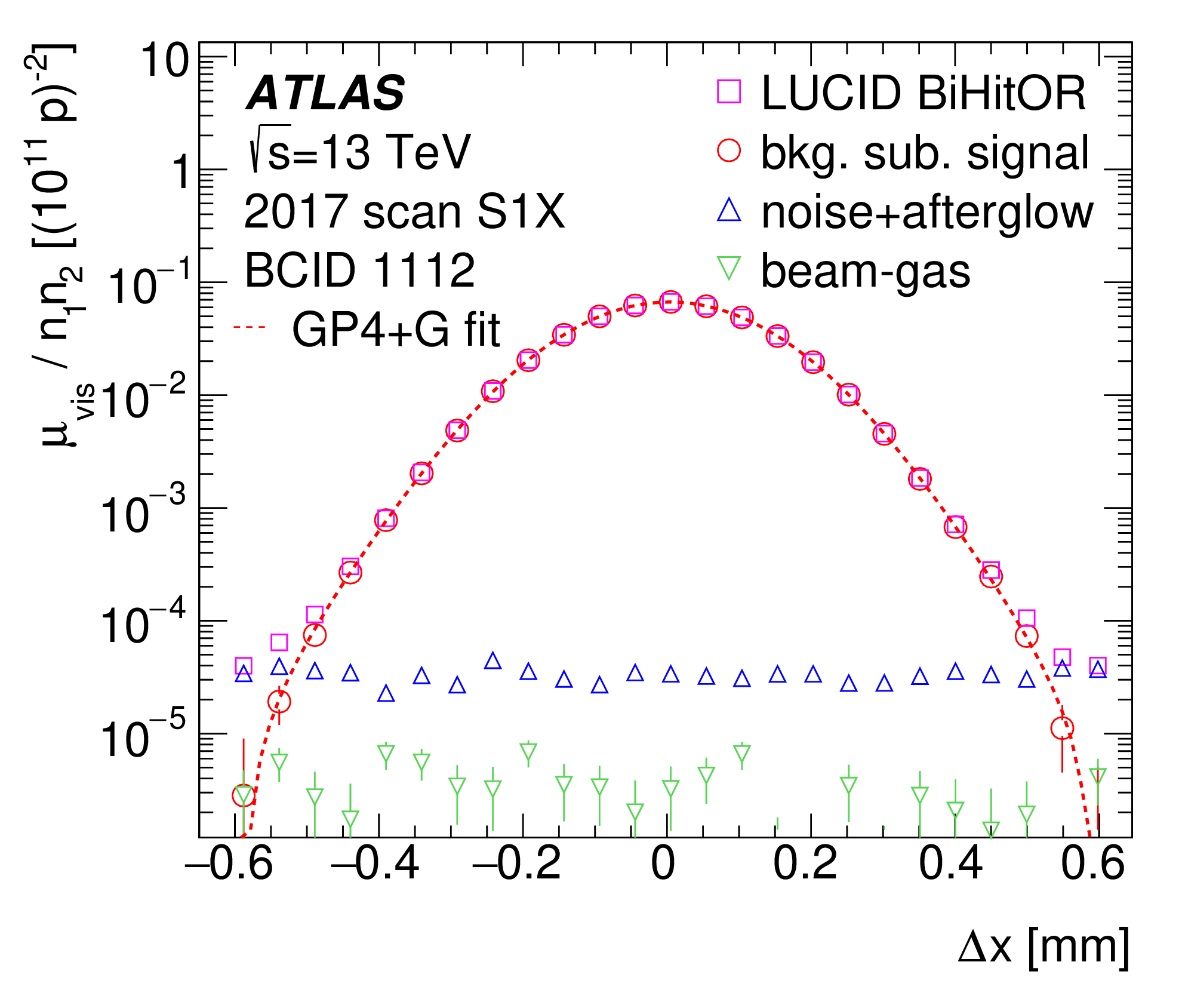Briefings
When jets go dark
For the very first time, the ATLAS Collaboration has searched for dark jets that closely resemble QCD jets. Instead of originating from Standard-Model particles, these dark jets would be produced through a new, heavy particle called the Z' boson.
ATLAS measures ZZ production using Run-3 data and a new slim data format
The ATLAS Collaboration has just released a new measurement of the production cross section of two Z bosons. This highlight result examines data collected during Run 3 of the LHC and pioneers the use of PHYSLITE, a new, reduced data format that requires significantly less storage.
ATLAS searches for new phenomena using unsupervised machine learning for anomaly detection
In a new paper submitted to Phys. Rev. Lett., the ATLAS Collaboration pioneers the use of unsupervised machine learning to search for anomalous collision events which could be from new physics phenomena.
Quest for the curious magnetic monopole continues
In a new study presented at the EPS-HEP 2023 conference, the ATLAS Collaboration combed through the full LHC Run-2 dataset (recorded 2015-2018) in search for magnetic monopoles and HECOs (see Figure 1). The result places some of the tightest limits yet on the production rate of magnetic monopoles.
ATLAS releases comprehensive review of supersymmetric dark matter
In new results presented today, the ATLAS Collaboration provides its most comprehensive overview of the searches for weakly-interacting supersymmetric particles. By developing new search algorithms and exploiting machine learning techniques, researchers have probed deep into this difficult-to-reach territory.
Three’s no crowd: ATLAS measures tri-boson production
The ATLAS Collaboration has announced the first observation of two different tri-boson processes: the simultaneous production of a W boson with two photons (Wγγ) and the production of a W boson, a Z boson and a photon (WZγ). The production of a Z boson with two photons (Zγγ) was first observed in 2016 using data from LHC Run 1 (2010-2013). In a new publication, the ATLAS Collaboration expanded the scope of this initial observation using Run 2 data.
ATLAS hunts for new physics in the scattering of W bosons
Vector boson scattering processes play a special role within the Standard Model, as they are closely related to the Higgs mechanism and can proceed via an exchange of a Higgs boson. By studying these processes, ATLAS physicists are exploring multiple new-physics models, including anomalous self-interactions of the W bosons and extended Higgs sector with additional Higgs bosons.
Machine learning is revolutionising our understanding of particle “jets”
This week, ATLAS physicists presented four exciting new results about jet tagging using AI algorithms at the BOOST 2023 conference held at Lawrence Berkeley National Lab (USA).
Signal and noise
The ATLAS Collaboration has released two new results explaining how detector timing measurements and calorimeter signal calibration using artificial intelligence (AI) are being used to further improve the quality of data recorded by the experiment.
ATLAS measures Higgs boson mass with unprecedented precision
This week, at the Lepton-Photon Conference in Melbourne (Australia), the ATLAS Collaboration presented its measurement of the Higgs boson mass in studies of Higgs decays to two photons using the full LHC Run-2 dataset (“H→yy” or the diphoton channel), and a new combination of this measurement with the 2022 measurement of the Higgs boson mass in studies of the Higgs decays to four leptons (the “H→4l channel”).
Giving collisions a new shape
When studying the shape of LHC collision events, physicists ask: how similar or different is their energy flow? The ATLAS Collaboration recently published a measurement of new collision event shapes in high-energy multijet events at the LHC.
Evolving ATLAS conditions data architecture for LHC Runs 3 and 4
For Run 3 of the LHC (2022–ongoing), the ATLAS Collaboration decided to change how it stores and processes conditions data. The significant efforts that went into this change – and the motivations for them – were presented at the 26th International Conference on Computing in High Energy and Nuclear Physics in May.
Not a jet all the way: is dark matter hiding in plain sight?
What happens if dark-matter particles are produced inside a jet of Standard-Model particles? This leads to a novel detector signature known as semi-visible jets! The ATLAS Collaboration has come up with a new search for semi-visible jets, looking for them in a general production mode where two protons interact by exchanging an intermediate particle, which is then converted into two jets.
LHC experiments see first evidence for rare Higgs boson decay into two different bosons
The ATLAS and CMS Collaborations have joined forces to report first evidence of the Higgs boson decaying into a Z boson and a photon.
New high-precision measurements of W and Z boson properties
At the 2023 LHCP conference, ATLAS physicists presented precise new measurements of the W± and Z boson transverse momentum distributions at two centre-of-mass energies: 13 TeV and, for the first time, 5.02 TeV. These results give unprecedented information on these transverse-momentum shape spectra, providing crucial input for other studies of these bosons.
ATLAS measures the Higgs boson at 13.6 TeV
The ATLAS Collaboration just released new measurements of the production rate (or cross-section) of Higgs bosons at 13.6 TeV using data collected in the second half of 2022.
Probing fundamental symmetries of nature with the Higgs boson
In the new results presented at the Moriond conferences, the ATLAS Collaboration tested the CP invariance of Higgs-boson interactions with vector bosons (W or Z bosons).
LHC passes a new milestone
The ATLAS Collaboration has just published the most precise measurement to date of the production cross section of top-quark pairs. The measured value is 829 ± 15 picobarns and has a relative uncertainty of just 1.8%.
ATLAS confirms mild tension in production of top-quark pairs with a W boson
The ATLAS Collaboration has released the most detailed analysis to date of the production of top-quark pairs alongside a W boson.
ATLAS observes the simultaneous production of four top quarks
The ATLAS Collaboration at CERN announces the observation of the simultaneous production of four top quarks. This is one of the rarest – and heaviest – processes ever observed at the Large Hadron Collider (LHC), with a total particle mass of almost 700 GeV.
ATLAS measures the strength of the strong force
The ATLAS Collaboration at CERN has released a precise new measurement of the Z-boson transverse momentum. This has allowed researchers to determine the strength of the strong force. Their result has less than 1% uncertainty, making it the most precise determination of the strong force ever made by a single experiment.
New ATLAS result weighs in on the W boson
The ATLAS Collaboration has measured the W boson mass to be 80360 MeV with an uncertainty of 16 MeV – in agreement with the Standard Model.
Searching from top to bottom for lepton unity
The ATLAS Collaboration has released an impressive set of searches for leptoquarks interacting with third-generation leptons or quarks – placing valuable constraints on leptoquark parameters.
Tau & co.: the search for new physics with the heaviest leptons
The ATLAS Collaboration has released two new studies of the tau lepton, investigating whether this elementary particle may actually be composite in nature.
ATLAS delivers most precise luminosity measurement at LHC
The ATLAS Collaboration has just released its most precise luminosity measurement to date. They studied four years of measurements (2015-2018), covering the entire Run 2 of the LHC to assess the amount of luminosity delivered to the ATLAS experiment.




